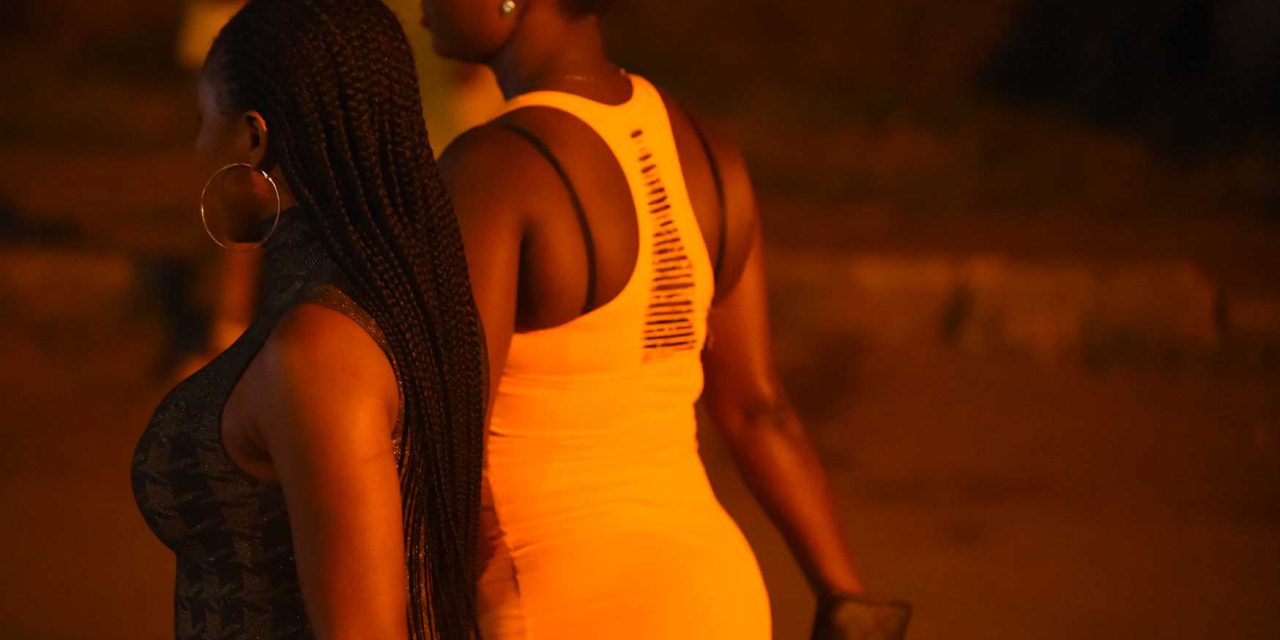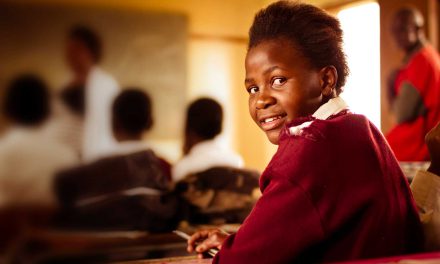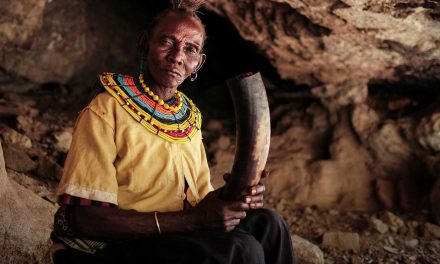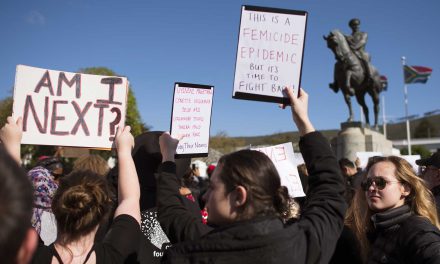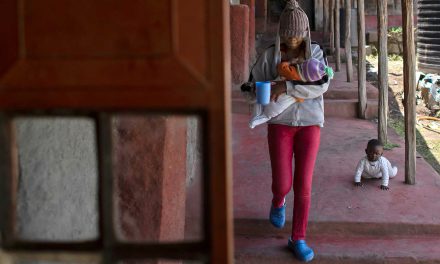Two teenagers, one from Uganda (16) and the other from Kenya (17), wander aimlessly at night on the side of a deserted road in freezing temperatures in the Kenyan capital, Nairobi. They say they are waiting for their “friend”, a well-off man they met a few days ago at a supermarket, who promised them a comfortable place to sleep during the biting winter.
“He drives an expensive blue car. He is a good man, very generous. I think you guys should leave as quickly as possible because he doesn’t want anyone to know him,” Sophia*, from Kenya, tells Africa in Fact.
It is unclear what the rich Kenyan intends to do with the girls, or where he is taking them. Nevertheless, the girls reassured Africa in Fact they would be safe and nothing would happen to them.
A few metres from a dark road leading to a supermarket, a group of prostitutes – young adults – hailing from different countries in the region including Tanzania, Burundi, and Uganda – prepare to start their night duty.
“These are prostitutes, my friend and I are not,” Christine*, from Uganda, says. “We are hustling in our own way. In fact, I came to Kenya to seek a better life and peace of mind. At home, nobody cares. I was treated unfairly because I’m a girl. I used to work on the farm all day under the hot sun, and nobody bothered to send me to school. When I heard that my parents were preparing to give me away in marriage to an older man this year, I thought I should leave the country for good. My childhood friend is already married and has a child. In Uganda, the situation is not good for girls of my age,” she adds emotionally.
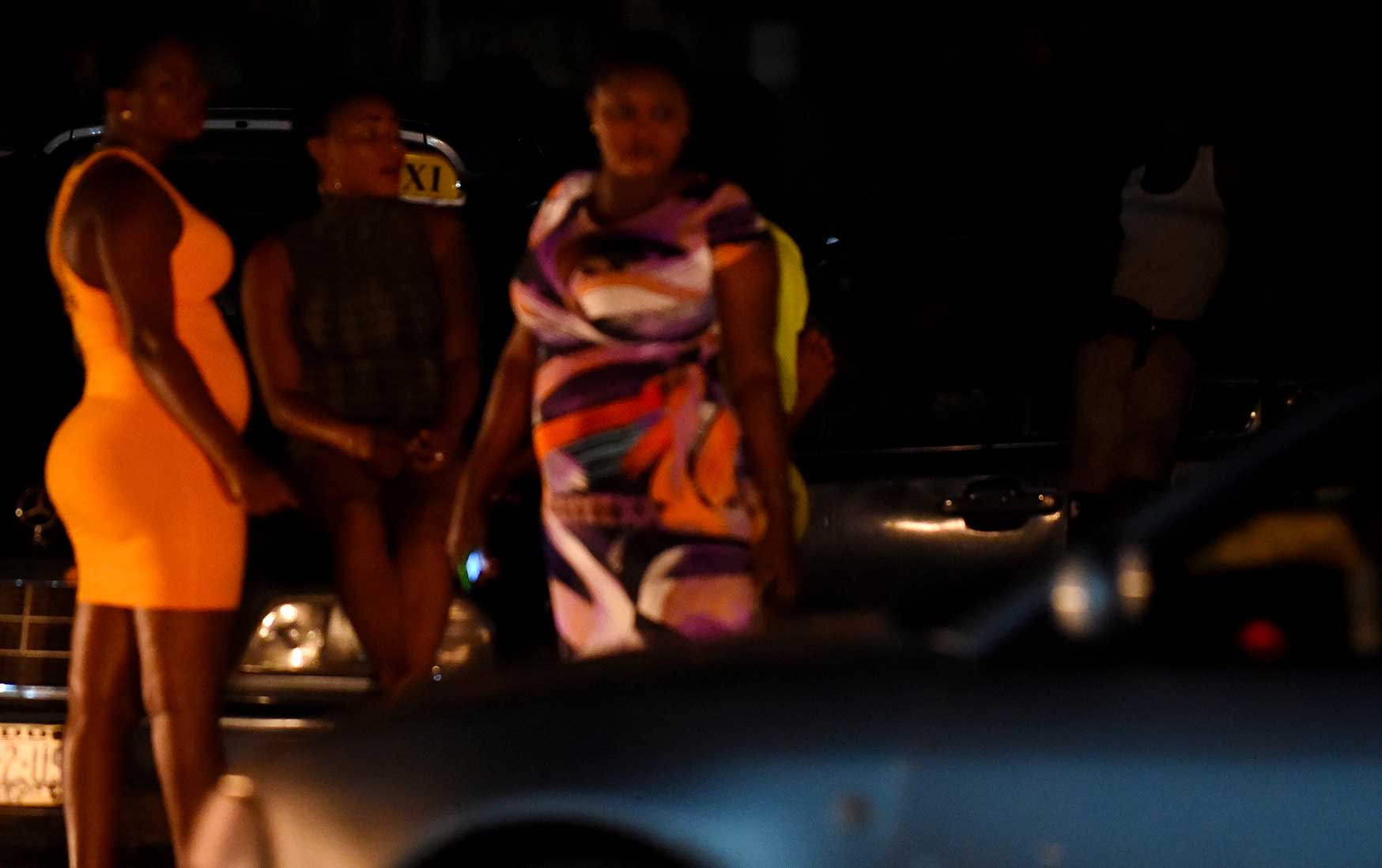
Prostitutes stand on the street in Benin City, capital of Edo State, southern Nigeria. In Benin City, Nigeria’s capital of illegal migration, no one says the word “prostitution”. The word on the street for the young girls who leave for Italy or France is “hustling”.
UNICEF says Uganda has the 16th highest rate of child marriage in the world, and the 10th highest number of child brides globally.
However, Christine might soon find out that the grass is not always greener on the other side. Despite its powerful economic status (Africa’s sixth largest economy), Kenya is no paradise for girls, whose lives and futures are fragile due to what critics say is a lack of support from families and teachers, and the government’s unfriendliness towards girls.
The Kenyan Ministry of Health revealed that between January and February 2022, they handled 45,724 cases of teenage pregnancy in girls aged 10 to 19 years. The government of Uganda said nearly 650,000 teen pregnancies were recorded between 2020 and 2021.
Sophia got pregnant, delivered a baby, but ran away from home after a violent family dispute, leaving the child behind. More often, when the man runs away or the boy father is unable to support the baby, the task of caring for the baby, financially, physically, and emotionally, is shifted to families.
“I went through hell after delivering the baby,” she tells Africa in Fact. “Instead of supporting me, they kept beating me up and throwing insults at me for messing up my life. They never really cared about me in the first place. When I thought it was too much, I decided to leave. Though I have not spoken to my family for a while, I know that my baby is doing well by the grace of God.”
Sophia and Christine are just the tip of an iceberg in East Africa, a misogynistic and patriarchal society where young girls face an uphill battle for survival.
A report published in 2020 by the Addis Ababa-based African Child Policy Forum (ACPF) painted a bleak picture of the situation of girls in Africa. “The majority of girls are marginalised and remain victims of multiple deprivations and vulnerabilities, including sexual abuse and labour exploitation, deprivation of healthcare, sanitation, and education, and harmful practices such as child marriage and female genital mutilation (FGM),” says the report.
As tensions rise in Kenya around the floodgate of teenage pregnancy currently sweeping communities, the blame game seems to have heated up. Parents blame both the girls and the teachers for the mess, and churches lash out at parents and teachers for being irresponsible. Parents and activists slam the government for its failure to fulfil its duties to work toward the protection and well-being of the youth.
Instead of blaming each other, the government, civil society organisations, parents, religious leaders, and other community members need to work together to try to alleviate the problem, says Diana Kendi Makale, award-winning journalist and the communications and development manager at Kakenya’s Dream.
Founded in 2008, Kakenya’s Dream is a non-profit organisation that leverages education, health, and leadership programmes to empower girls and end harmful traditional practices such as FGM and child marriage.
“In addition to that, we need to look at the root cause of teenage pregnancy and find ways to solve the problem,” Makale told Africa In Fact. “These solutions should include having conversations with men and boys. More often you will find organisations trying to solve problems without some of the key players, for instance, men,” she says.
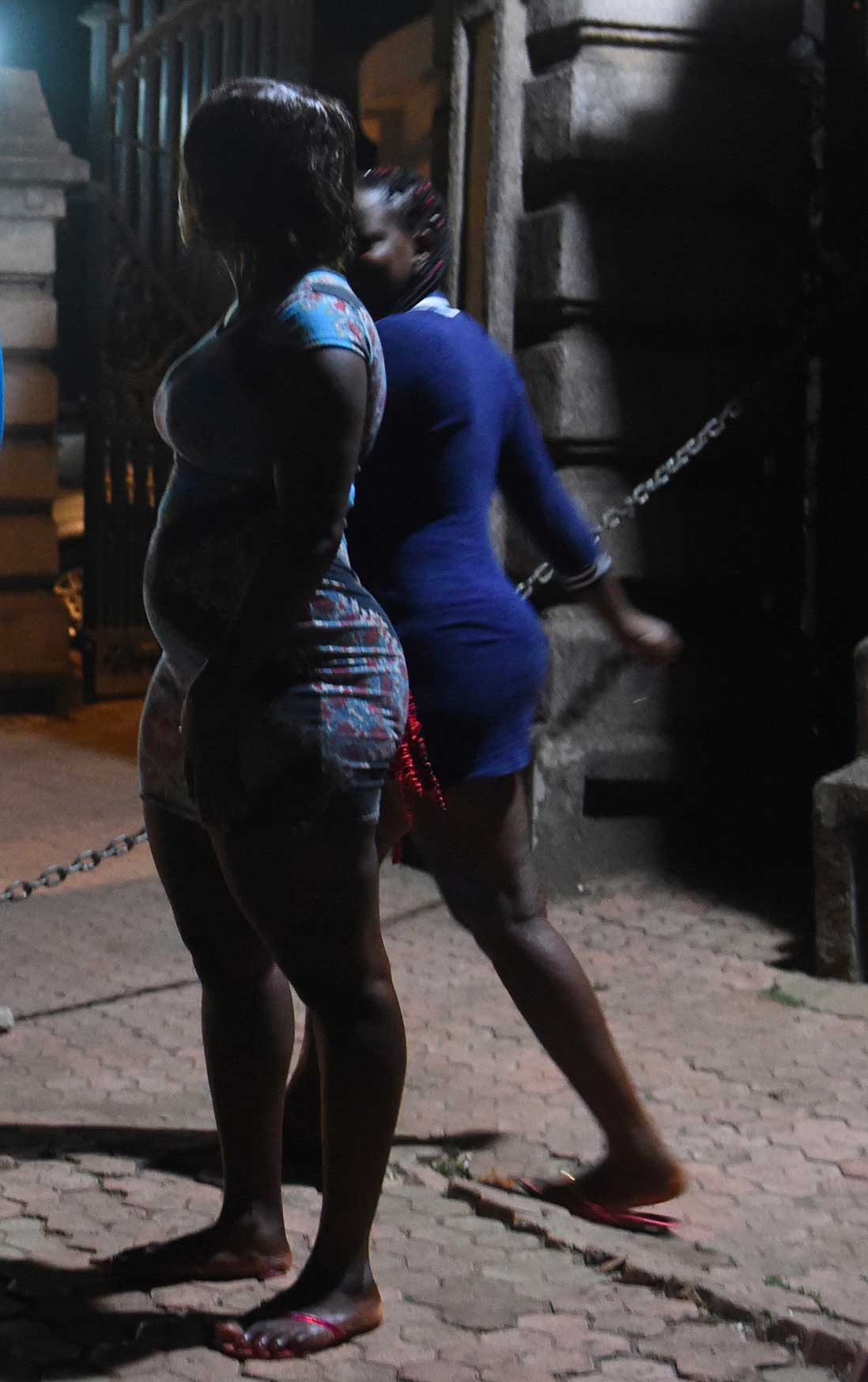 In Uganda, where in 2021 nearly 33,000 teenage girls got pregnant monthly – an equivalent of 1,052 a day, community organiser Christopher Opio unequivocally shifts the blame to parents, especially those in rural areas.
In Uganda, where in 2021 nearly 33,000 teenage girls got pregnant monthly – an equivalent of 1,052 a day, community organiser Christopher Opio unequivocally shifts the blame to parents, especially those in rural areas.
Opio, the programme and communication officer at the Oil Refinery Residents Association (ORRA), a women-led community-based organisation started in 2012 as a pressure group to protect the rights of women and youth affected by an oil refinery project, told Africa in Fact that many parents, especially in rural areas, ignored repeated calls by the government and NGOs to make use of family planning.
He said the situation was exacerbated by parents who did not support their children’s schooling, even neglecting to buy the materials they need for class. “As time goes, the girl child is demoralised and ends up being deceived by some men, which sometimes leads to early marriage or early pregnancies,” he said.
According to Opio, some parents in his community do not send their girls to school despite having the financial resources to do so, and when things go wrong, they blame the government. He also points out that changes to weather patterns have significantly affected crop production, which many poor families depend on to feed and send their children to school.
Opio believes that the first step to reducing teenage pregnancies and improving prospects for girls is to conduct massive mindset change campaigns, especially in rural areas. “This can be best done through sharing experience and career guidance by prominent people, including women,” he said.
Research also links teenage pregnancy to mental health. A study recently conducted in Kenya by Judith Osok, Pius Kigamwa, Ann Vander Stoep, Keng-Yen Huang, and Manasi Kumar found that adolescent pregnancies within urban resource-deprived settlements predisposed young girls to adverse mental health and psychosocial problems, notably depression.
Sophia told Africa in Fact: “I was very depressed. If I was still staying at home, I think I would have killed myself or gone mad because home felt like hell. Now that I’m at peace here, I shall never return there. Christine and I support each other, and we are like family.”
Mental health is an integral part of a girl’s well-being and overall health, says Makale, adding that since children and adolescents spent most of their time in schools, it would be advisable for the government to invest in the establishment of school counsellors to support learners with their mental health.
In most cases, pregnant girls quit school and never return. In many parts of Africa, government policies also ban pregnant teenagers from attending school, and teen mothers from returning to school, denying them a chance to rebuild their lives.
In Tanzania, in November 2021, five years after the late president John Magufuli said, “we cannot allow this immoral behaviour to permeate our primary and secondary schools”, the government announced that it would lift a controversial ban – rooted in policy from the 1960s – on teenage mothers continuing their education.
As Makale notes: “It is unfortunate that certain governments ban teenage mothers from going back to school because it is mentally handicapping for them. In the communities where we work, once a girl becomes pregnant, her parents usually abandon her to the extent that they choose to marry her off rather than put her back in school.
“This usually leads to early or forced marriages that jeopardise their futures and make them unhappy. At Kakenya’s Dream, what we normally do is approach their parents/guardians and explain to them why it is important to give them a second chance and accommodate and support them to complete their studies.
“The conversations are never easy, but at least we have managed to get all of our girls who got pregnant back into school. Some of them sat for their Kenya Secondary Certificate Examinations (KCSE) this year and passed and are now waiting to be admitted to universities in September.
“They are more focused, determined, hard-working, and brilliant. Some of them volunteer in various organisations and younger girls look up to them. That’s the power of giving someone a second chance.”
*Names have been changed
Kinshasa-born Issa Sikiti da Silva is an award-winning freelance journalist. Winner of the SADC Media 2010 Awards in the print category, he has travelled extensively across the African continent. He lived in South Africa for 18 years, where he worked for 10 years as a journalist before leaving for West Africa, and later to East Africa, to work as a foreign correspondent. He is currently based in Nairobi, Kenya.

